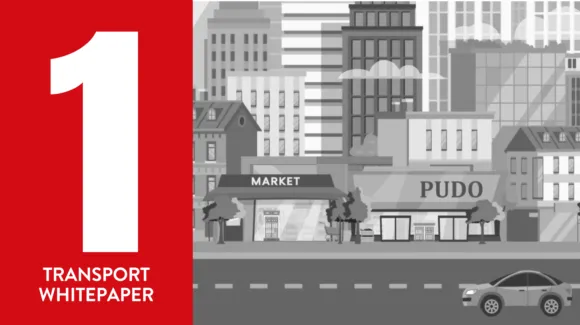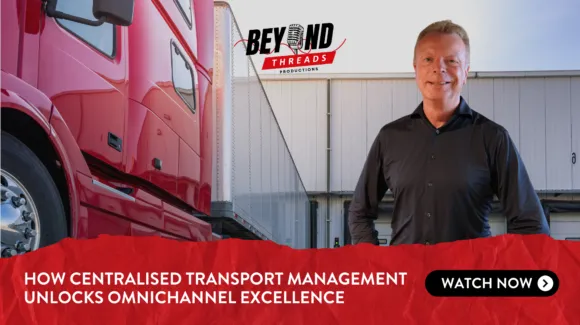As we’ve discussed, optimising your e-commerce checkout can be essential to converting hesitant customers and reducing your online cart abandonment rate. However, there’s another, potentially more significant part of the customer journey that separates winning brands from the rest: the period after a customer clicks ‘buy now’.
Because even after you’ve converted a visitor into a customer, what many brands don’t realise is that the real battle for loyalty has only just begun. Those hours and days between ‘order confirmed’ and ‘package delivered’ aren’t just about logistics. They’re your brand’s ‘final exam’, graded by every customer who trusts you with their money.
The post-purchase paradox: why victory can become defeat
E-commerce leaders worked this out years ago. What began as a purely operational function has become their secret weapon – transforming routine deliveries into memorable brand moments that competitors can’t replicate. Meanwhile, traditional players are slowly realising that exceptional transportation management is about more than just moving parcels. It’s about moving customers from ‘satisfied’ to ‘loyal’.
But here’s where it gets interesting: an outstanding transport experience requires more than just offering multiple delivery options at checkout. The real magic happens in the invisible moments – the complex choreography of transparency, reliability and communication that can transition logistics from an operational necessity into a competitive advantage. This chapter explores how holistically optimising the entire post-purchase experience can activate brand loyalty and ultimately deliver stronger growth.
The Curse of WISMO
‘Where Is My Order?’ (WISMO) enquiries can be deadly for customer service efficiency and brand trust. According to DigitalGenius, these seemingly innocent questions account for around one in five customer service contacts for apparel brands. But the real problem isn’t just the operational burden – it’s what a WISMO request represents: a fundamental breakdown in customer communication that signals your transport experience isn’t meeting basic expectations. When customers resort to chasing their own orders, you’ve already lost the trust battle. The solution here isn’t better customer service responses; it’s proactive communication that makes WISMO enquiries obsolete.
The communication ‘black hole’ that’s killing customer confidence
For customers, the period between ordering and receiving an item is often a ‘black hole’ in terms of visibility and communication. Behind the scenes, this phase involves a complex chain of handovers between line haulage, regional distribution hubs and last-mile carriers – yet customers are often kept in the dark about this journey. And a lack of transparency can be hugely detrimental to the customer experience and trust-building.

Therefore, closing knowledge gaps and eliminating these ‘black holes’ in the delivery journey is crucial for maintaining customer confidence throughout the post-purchase experience. The difference in service levels can be stark: while a low-cost carrier might only provide updates when a package is about to be delivered, a specialist 3PL provider can establish many more ‘notification checkpoints’ – from the moment an order is picked to each intermediary step of the delivery journey – offering continuous visibility.
And with around half of today’s e-commerce shoppers checking the delivery status of their orders, prioritising transparency can pay loyalty dividends for brands. Customers expect more than just an estimated delivery date. They want clear, proactive updates on their order, particularly if the unexpected happens and there’s a delay. Post-purchase communication, therefore, becomes an extension of your broader brand experience – and using intelligent transport management solutions can make it a key loyalty lever.
Keeping customers sweet: Apology gifts for late orders
When delays happen, strategic apology gifts can transform frustrated customers into brand advocates. The key lies in making the gesture feel genuine rather than transactional. A simple discount code can feel like damage control, but a thoughtful surprise that reflects your brand values is more likely to foster a genuine emotional connection. Premium brands might include a small luxury sample or exclusive access to new collections, while sustainability-focused brands could offer tree-planting certificates or eco-friendly accessories. The investment in these gestures can often pay loyalty dividends, making it clear that you’re not just fixing a problem – you’re demonstrating that customer relationships matter more than individual transactions.
Three winning strategies to convert transport experience into loyalty
Smart brands in the fashion and lifestyle space are already optimising the transport experience to reinforce post-purchase credibility with customers. Here’s how:
Strategy #1: Eliminate uncertainty through radical transparency
As discussed, one of the most effective ways to earn customer trust is to eliminate uncertainty during the delivery process. However, to provide customers with updates that are specific, timely and accurate, you need excellent real-time visibility across your transport network. A robust transport management system (TMS) makes this level of visibility possible, enabling you to break the delivery journey into clear, communicable milestones – such as departure from the warehouse, arrival at a distribution hub and handover to a local carrier – and update customers when each stage is accomplished.
The most advanced brands go further with ‘control tower’ operations. This isn’t a physical location; it’s a digital command centre that gives brands a centralised, real-time view of their entire transport network. It brings together data streams from different haulage companies, couriers, fulfilment centres and tracking systems, enabling brands to monitor live delivery performance. This is essential for effective exception management. Using a transport control tower setup, brands can proactively identify potential issues and notify customers as soon as delays occur. For example, if a carrier leaves an order sitting in the distribution yard for longer than expected, the system can flag it automatically and trigger predictive alerts. This proactive approach prevents unexpected delays that would otherwise leave customers wondering about the status of their orders. It enables brands to manage expectations and maintain trust, even when issues arise.
What is a transport control tower (TCT)?
A transport control tower integrates systems, processes, and people into a central hub for holistically monitoring transportation operations. It’s your digital supply chain ‘nerve centre’, providing real-time visibility and enabling proactive decision-making.
The additional benefits of transparent communications
Beyond fostering trust, comprehensive tracking systems can also help reduce operational costs. Effective transparent transport management means fewer WISMO (Where Is My Order) enquiries, which directly translates to a lower volume of customer service calls. When customers have continuous visibility into their order status, they’re less likely to contact support for updates, freeing up resources that can be redirected to more complex customer queries. In this way, transparent transport management contributes both to customer satisfaction and cost efficiency.
Strategy #2: Transform feedback into competitive advantage
Asking customers for feedback after delivery is one of the most effective ways to improve your transport operations and gain the trust of potential customers. By actively seeking input about customers’ delivery experience, brands unlock a vital feedback loop. This data can highlight recurring issues, identify service gaps with specific carriers, and reveal how customers actually perceive your logistics performance. In short, feedback helps you fine-tune operations where it matters most – at the point of experience.
The impact of this strategy extends beyond internal operational improvements. That’s because delivery feedback can significantly influence future purchase decisions. In today’s digital retail environment, reviews are among the most trusted information sources for new customers. Data shows that reviews can increase conversion rates for clothing retailers by 23% while 74% of consumers check at least two review websites before making a purchase decision. Every review about a smooth delivery – on time, well-communicated and hassle-free – acts as a trust signal for the next customer.
For this to work, the feedback process needs to be frictionless. Post-purchase emails should include simple, branded mechanisms for giving feedback through one-click ratings, short surveys or review requests. These touchpoints encourage engagement while showing customers that your brand values their input and is committed to continuous improvement. In this way, you can transform the transport experience from a passive transaction into an active dialogue.
Over time, this kind of feedback collection creates a virtuous cycle. You gain better operational insight, customers feel heard and respected, and prospective buyers see visible proof that your brand delivers – both literally and figuratively. The result? A transport experience that continuously evolves, powered by trust and transparency.
The details that define you: Why branded notifications matter
Many companies overlook the fact that every transport notification has the potential to be a micro-moment of brand experience. When customers receive order updates – whether it’s ‘picked and packed’ confirmations or detailed returns tracking – these touchpoints provide a valuable opportunity to reinforce your brand identity. Smart brands understand that customising these notifications with consistent branding, tone of voice and visual identity is essential for creating a cohesive customer journey. Investing in branded communication systems pays dividends in perceived quality and customer loyalty, turning routine operational updates into brand engagement opportunities.
Strategy #3: make your values visible in every delivery
Your transport experience is one of the most tangible expressions of your brand identity. Every delivery decision you make sends a message about what your brand truly stands for, creating opportunities to either reinforce your positioning or inadvertently undermine it. Indeed, the most successful fashion brands understand that transport experience (TX) is a strategic tool that sits alongside web UX, advertising, and product development as a core expression of brand values and personality.
This values-driven approach requires intentional choices across every element of your transport strategy. Premium brands may opt for white-glove delivery services and elegant packaging to mirror their luxury positioning. Meanwhile, sustainability-focused brands may want to offer carbon-neutral shipping options and minimal or recycled packaging. Fast-fashion brands, on the other hand, might focus on speed and convenience, offering multiple delivery windows and collection options.
The key to success lies in authentic implementation. Customers have become adept at distinguishing between brands that merely pay lip service to values and those that genuinely embed them into their operations. When your transport choices consistently reflect your stated principles, you create powerful moments of brand validation that extend far beyond the delivery itself.
Patagonia’s values-driven delivery model
Recognised globally for its commitment to environmental protection, Patagonia applies a sustainability-focused mindset to its transport operations in practical and transparent ways. This includes increasing the use of drop-shipping (sending products directly from factories to international distribution centres), reducing reliance on air freight and scaling back the availability of CO2-intensive two-day shipping options. These conscious decisions reflect Patagonia’s broader mission, delivering an authentic brand experience across all customer touchpoints.
Optimising transport experience for reverse logistics
The returns experience represents one of the most critical touchpoints in your customer journey – and a great opportunity to transform a potentially negative moment into a loyalty-building advantage. A streamlined returns process does more than resolve customer issues; it demonstrates your brand’s commitment to customer satisfaction. By integrating convenient transport options such as prepaid labels, QR code returns, local drop-off points, and ‘buy online, return in-store’ (BORIS) options, you create a frictionless experience that customers appreciate rather than just endure. This approach builds trust and eliminates the stress that typically accompanies returns. Indeed, 33% of loyal customers would abandon a retailer following a ‘difficult’ returns experience.
The strategic value of optimised returns management also extends to operational efficiency. Regular, automated updates – such as confirmation when return requests are received, processing notifications and refund timelines – create a transparent communication framework that keeps customers informed while again reducing service centre enquiries. When returns become a smooth, transparent experience rather than a stressful ordeal, first-time customers are much more likely to become loyal brand fans, transforming the returns process from a cost centre into a competitive differentiator.
Transport experience to jump-start your customer loyalty
The evolution of transport management reflects a fundamental shift in customer experience thinking. In an increasingly crowded marketplace, the companies that thrive understand that every touchpoint matters – including the intermediary stages of the transportation journey. These brands recognise that transport experience isn’t simply a cost centre. It’s a strategic opportunity to build trust, reduce operational costs and foster long-lasting customer relationships. By implementing comprehensive tracking, proactive communication and brand-aligned delivery experiences, you transform what was once a logistical afterthought into a powerful loyalty-building tool. As customer expectations continue to evolve, one question will separate the winners from the losers: Will you view transport management as an operational necessity, or will you leverage it as your secret weapon for building customer satisfaction, operational efficiency and competitive differentiation? The choice – and the potential competitive advantage – is yours.















